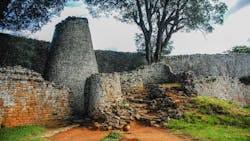Research answers potable water mystery of Great Zimbabwe
New research may have solved the mystery of stable water supply in Great Zimbabwe, the first major city of southern Africa, according to a press release by Aarhus University’s Kaherine Eg Lindgaard.
The city flourished and held a large population until it was abandoned in the 17th century. However, a mystery surrounding the city had been how Great Zimbabwa was able to provide drinking water for so many people and livestock.
A group of researchers from South Africa, England, Zimbabwe, and Denmark may have found an answer to the mystery in the article “Climate-smart harvesting and storing of water: The legacy of dhaka pits at Great Zimbabwe,” published in Anthropocene.
With remote sensing methods and excavation, the researchers investigated a number of large depressions in the landscape, which are locally called "dhaka" pits. The depressions have not been investigated before, as it has been thought that they were made only to collect clay used for building in the city. However, the new studies show that this may not be the whole truth.
The investigations found that the pits must also have been used to store and manage water for the city. There are clear signs that the depressions have been excavated where they can collect surface water, and at the same time seep and store groundwater for use during the dry periods of the year.
The researchers found more "dhaka" pits than were known before, and they have been found where small streams will naturally run through the landscape when it rains or where groundwater seeps out. This, combined with the location and construction of the depressions, has convinced the researchers that the "dhaka" pits functioned as a clever system to ensure a stable water supply, by storing more surface and groundwater that could be used outside the rainy season as well.
The finding shows that, much earlier than previously thought, management of the natural hydrological system was under control in the city.
